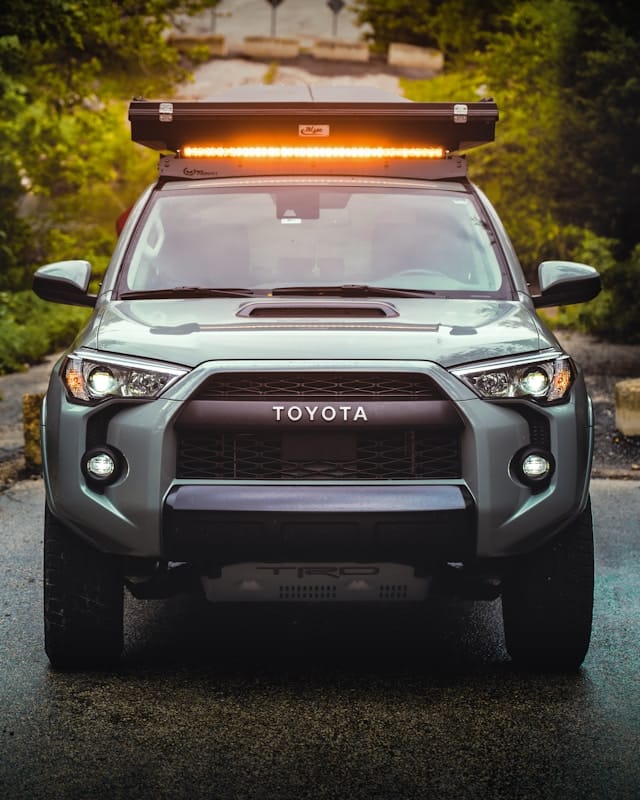Your Toyota Hilux is a force to be reckoned with on the road. But when it comes to off-roading, your vehicle can benefit from some enhancements. Installing a lift kit is one of the most popular upgrades for off-roading enthusiasts. This modification not only gives your truck a more aggressive look but also provides improved ground clearance, larger tires and superior off-road performance. In this comprehensive guide, we’ll discuss the best method for installing a lifted suspension on a Toyota Hilux for off-roading.
Choosing the Right Lift Kit
When it comes to upgrading your Hilux’s suspension, you aren’t short of options. However, not all lift kits are created equal. The right one for your truck depends on your specific needs, preferences, and the type of off-roading you plan on doing.
Also to discover : Eco-friendly mobile car wash services in london for your convenience
Body lift kits are the most basic and affordable solution. They raise the body of your vehicle without affecting the suspension or steering geometry. This type of kit is a good choice if you’re mainly interested in the aesthetic enhancement and slightly improved ground clearance.
Suspension lift kits are more complex and expensive, but they offer greater benefits for off-roading. They not only raise the body, but they also increase the suspension travel and improve the ride quality on rough terrains.
In the same genre : How to Calibrate the Adaptive Cruise Control on a New Ford Edge for Accurate Function?
Spring over axle (SOA) lift kits are another option for extreme off-roaders. They offer the highest ground clearance, but they can significantly alter your vehicle’s handling and may require additional modifications, such as new driveshafts or brake lines.
Preparing Your Toyota Hilux
Before diving into the installation process, you need to prepare your vehicle. This involves assessing its current condition and carrying out any necessary maintenance.
Check your Hilux’s current suspension components, including the shocks, springs, and struts. If they’re worn out, you should replace them before installing the lift kit. Otherwise, the enhanced ride height could exacerbate the issues and lead to a bumpy ride, reduced handling capability, or even accidents.
It’s also essential to review the vehicle’s brake system. A lifted suspension will put more strain on your brakes, so make sure they’re in top condition. Finally, check the tire size. Once you’ve lifted your truck, you might want to install larger tires for improved off-road performance.
Installing the Lift Kit
Now that the preparation phase is complete, it’s time to install the lift kit. This process might seem daunting, but with some patience and the right tools, you can do it yourself.
Firstly, park your Hilux on a flat, level surface and jack it up. Be sure to use jack stands to secure the vehicle. Remove the tires and proceed to disconnect the shocks, springs, and other related components.
Start with the front suspension. Depending on the type of lift kit, you might need to replace the spring and shock absorbers. Follow the manufacturer’s instructions to install the new components. Once the front suspension is upgraded, repeat the process for the rear suspension.
Remember, the lifted suspension will alter the Hilux’s drive shaft angles. Therefore, it’s crucial to adjust them accordingly to prevent any driveline vibration or damage.
Aftercare and Adjustments
Following installation, there’s a need to carry out a full alignment. The lift kit will have changed the suspension geometry, which means the front and rear wheels may no longer be perfectly aligned. This can affect the vehicle’s handling and tire wear.
During the first few weeks after installing your lift kit, pay close attention to your Hilux’s behavior. Note any unusual noises, vibrations, or handling quirks. If you experience any of these symptoms, it might indicate that something was installed incorrectly or needs further adjustment.
Road Testing Your Lifted Hilux
The final stage involves taking your lifted Hilux out for a spin. Start with short drives on familiar terrain, gradually extending your trips and including varied conditions. Pay attention to how your vehicle behaves on different surfaces, how it handles bumps and potholes, and how stable it is at different speeds.
Remember that off-roading is a lot harsher on a vehicle than regular road driving. Hence, it’s essential to regularly check your truck’s suspension and other components for signs of wear and tear or any potential problems.
By following this advice, you’ll be able to enjoy the thrill of off-roading in your Toyota Hilux with a newly installed lift kit, knowing you’ve done everything possible to ensure a safe and enjoyable ride.
The Impact of Lift Kits on Your Hilux’s Performance
Lifting your Toyota Hilux can dramatically enhance its off-road performance. A lift kit allows for the fitment of larger tires that provide better grip and traction on challenging terrains. It also increases ground clearance, providing more room for your Hilux to handle rough paths and obstacles. As a result, you can take your Hilux places where a standard truck wouldn’t dare to tread.
However, it’s worth noting that a lift kit affects more than just your Hilux’s off-road ability. It changes the dynamics of your vehicle, from handling and ride quality to fuel efficiency and drivability. For example, a body lift might not significantly impact the ride quality or fuel economy, but a suspension lift or spring over axle (SOA) lift could.
A suspension lift increases the ride height and modifies the suspension system, which can lead to changes in the handling characteristics. This could make your Hilux feel less stable at high speeds or when cornering. On the other hand, an SOA lift gives the highest ground clearance but also alters the suspension geometry, possibly requiring additional modifications like new drive shafts or brake lines.
Moreover, lifting your Hilux will put more strain on its suspension components, including the control arms, shock absorbers, and coil spring. Therefore, it’s crucial to regularly inspect these parts for any signs of wear or damage.
Conclusion: Lift with Care and Enjoy the Ride
Installing a lift kit can transform your Toyota Hilux into an off-roading beast. However, it requires careful planning and execution to ensure that the result is not just visually appealing but also functional and safe. Whether you opt for a body lift, suspension lift, or an SOA lift, it’s essential to choose the right kit that suits your specific needs and off-road aspirations.
Once the lift kit is installed, remember to perform a full alignment and adjust your Hilux’s drive shaft angles. Keep a close eye on your vehicle’s behavior, especially during the first few weeks after the installation. Also, never forget to conduct regular checks on your Hilux’s suspension system, including the shock absorber, control arms, leaf spring, and coil spring.
The impact of lifting your Hilux goes beyond just the aesthetic enhancement or increased ground clearance. It can open up a new world of off-road adventures that were previously inaccessible. But remember, with the increased capabilities come increased responsibilities. You need to keep your lifted Hilux in top shape, maintain it regularly, and most importantly, use it responsibly.
So, equip your Hilux with a lift kit, hit the off-road trails, and experience the joy and thrill of off-roading – there’s no feeling like it!






